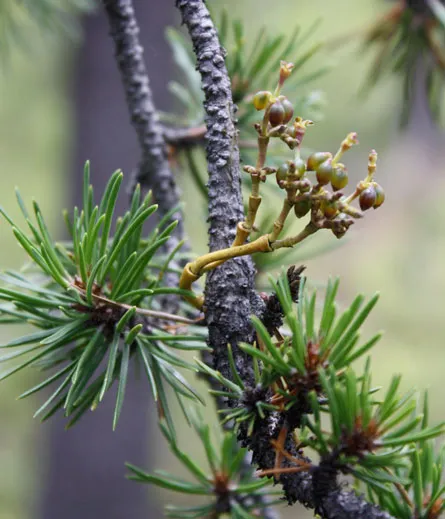Mistletoe leaves a big carbon footprint in Yellowstone
Sid Perkins reports from the annual meeting of the American Geophysical Union in San Francisco
SAN FRANCISCO — Just in time for Christmas, scientists report that some types of mistletoe may exacerbate climate change.

In recent field studies in Yellowstone National Park, biologist Ken Cullings and colleague Julie Hanely, both of NASA Ames Research Center at Moffett Field, Calif., measured the amounts of carbon dioxide emitted from the soil surrounding trees infested with a species of dwarf mistletoe, Arceuthobium americanum. They found that the average rate of carbon dioxide emission around those trees was more than 70 percent higher than the rate emitted from the soil around trees nearby that were free of the leafless parasitic plant.
(Thankfully, these new findings don’t relate to the leafy type of mistletoe commonly used to decorate doorways by folks desperate to be kissed during the holiday season.)
Cullings and Hanely took all of their soil emission measurements in the early afternoon. Because rates of carbon dioxide emission from soil can vary substantially at different times of day, estimating the overall increase in CO2 emissions from the areas plagued with dwarf mistletoe is difficult, the researchers note. Nevertheless, they speculate, the mistletoe-triggered bump in emissions is probably substantial.
The enhanced carbon dioxide flux from the soil results from a cascade of effects, says Cullings. The dwarf mistletoe pulls its nourishment, and especially sugars, from the living tissues of its host plant. Because those sugars never reach the host plant’s roots, soil fungi that tap into those roots for nourishment don’t receive enough food. Those fungi then boost their production of enzymes that help them break down organic matter in the surrounding soil, thereby gaining food but also producing carbon dioxide.
Besides boosting carbon dioxide emissions from soil in infested areas, dwarf mistletoe stifles a forest’s uptake of the greenhouse gas in several ways, says Cullings. The parasitic plant stunts the growth of and eventually defoliates its host plant, robbing that tree of its ability to absorb CO2 from the air. Trees thus weakened are more susceptible to diseases, insect attack and forest fire. And when infested trees die, they shed branches that fall to the forest floor and provide more food for the CO2-producing soil fungi.
Some studies hint that dwarf mistletoe infests trees in as much as 70 percent of the 48,000-square-kilometer, pine-dominated ecosystem that includes Yellowstone Park. So, Cullings and Hanely note, even a small increase in the current range of dwarf mistletoe could lead to relatively large increases in atmospheric CO2.






